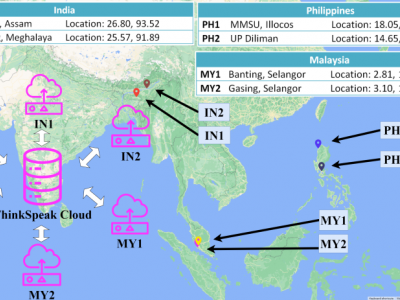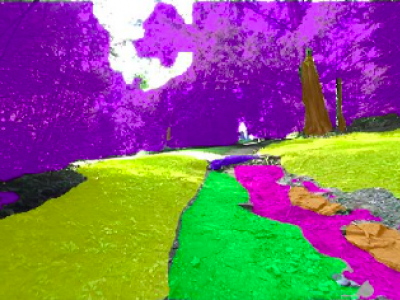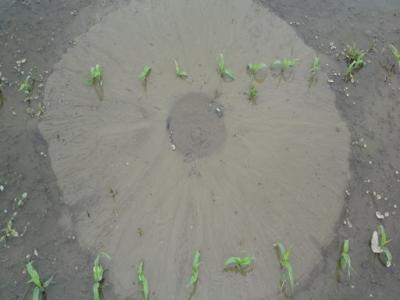Artificial Intelligence

The softwarization and virtualization of the fifth-generation (5G) cellular networks bring about increased flexibility and faster deployment of new services. However, these advancements also introduce new vulnerabilities and unprecedented attack surfaces. The cloud-native nature of 5G networks mandates detecting and protecting against threats and intrusions in the cloud systems.
- Categories:
 196 Views
196 ViewsThe advancement and ubiquity of digital networks have fundamentally transformed numerous spheres of human activity. At the heart of this phenomenon lies the Transmission Control Protocol (TCP) model, whose influence is particularly notable in the exponential growth of the Internet due to its potential ability to transmit flexibly through an advanced Congestion Control (CC). Seeking an even more efficient CC mechanism, this work proposes the construction of Deep Learning Neural Networks (MLP, LSTM, and CNN) for classifying network congestion levels.
- Categories:
 152 Views
152 ViewsThe data used in this work is collected using the AirBox Sense system developed to detect six air pollutants, ambient temperature, and ambient relative humidity. The pollutants are Nitrogen Dioxide (NO2), surface Ozone (O3), Carbon Monoxide (CO), Sulphur Dioxide (SO2), Particulate Matter (PM2.5, and PM10). The sensors monitor these pollutants in real-time and store them in a cloud-based platform using a cellular module. Data are collected every 20 seconds, producing 4320 readings each day.
- Categories:
 213 Views
213 ViewsScene understanding is essential for a wide range of robotic tasks, such as grasping. Simplifying the scene into predefined forms makes the robot perform the robotic task more properly, especially in an unknown environment. This paper proposes a combination of simulation-based and realworld datasets for domain adaptation purposes and grasping in practical settings. In order to compensate for the weakness of depth images in previous studies reported in the literature for clearly representing boundaries, the RGB image has also been fed as input in RGB and RGB-D input modalities.
- Categories:
 351 Views
351 ViewsThis work presents a specialized dataset designed to advance autonomous navigation in hiking trail and off-road natural environments. The dataset comprises over 1,250 images (640x360 pixels) captured using a camera mounted on a tele-operated robot on hiking trails. Images are manually labeled into eight terrain classes: grass, rock, trail, root, structure, tree trunk, vegetation, and rough trail. The dataset is provided in its original form without augmentations or resizing, allowing end-users flexibility in preprocessing.
- Categories:
 507 Views
507 ViewsThis dataset, titled "Synthetic Sand Boil Dataset for Levee Monitoring: Generated Using DreamBooth Diffusion Models," provides a comprehensive collection of synthetic images designed to facilitate the study and development of semantic segmentation models for sand boil detection in levee systems. Sand boils, a critical factor in levee integrity, pose significant risks during floods, necessitating accurate and efficient monitoring solutions.
- Categories:
 287 Views
287 Views
The UNISTUDIUM dataset contains the logs collected by Unistudium, the University of Perugia elearning platform based on moodle, a open source software for learning management systems (https://moodle.org).
The collected logs record interactions with the platform of students attending 4 courses during the time period of one semester, from 1st September to 31st December.
- Categories:
 150 Views
150 ViewsWe organized and collected two years' worth of complete fault work orders from a wind farm, and structured these work orders into a fault diagnosis event knowledge graph using the proposed algorithm. This graph includes fault modes, fault impacts, fault symptoms, inspection schemes, root cause identification, and maintenance strategies, covering all potential fault information and handling methods for wind turbines. This dataset records the head entity-relation-tail entity information in the form of triples using JSON format.
- Categories:
 746 Views
746 ViewsSurface electromyography (EMG) can be used to interact with and control robotic systems via intent recognition. However, most machine learning algorithms used to decode EMG signals have been trained on relatively small datasets with limited subjects, which can affect their widespread generalization across different users and activities. Motivated by these limitations, we developed EMGNet - a large-scale dataset to support research and development in EMG neural decoding, with an emphasis on human locomotion.
- Categories:
 874 Views
874 Views
To solve the problem of accurate recognition and picking of tea by tea picking robot, this study proposes a S-YOLOv10-SIC algorithm that integrates slice-assisted hyper-inference algorithm. This algorithm enhances the YOLOv10 network by introducing Space-to-Depth Convolution, asymptotic feature pyramid network, and Inner-IoU. These improvements reduce the loss of detailed information in long-distance and low-resolution images, improve key layer saliency, optimize non-adjacent layer fusion, enhance model convergence speed, and increase model universality.
- Categories:
 47 Views
47 Views




